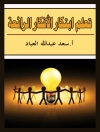Robust organizational capacity is a company s potential to apply its skills and resources to accomplish goals and exceed stakeholders expectations. This book provides readers with the ability to diagnose both the drivers of change in their organization and the type of change response needed. In addition to the traditional tangible dimension of change, it presents a framework to leverage the cultural and personal dimensions of change to sustain successful change initiatives. As well, it presents an organizational capability self-assessment process to derive the maximum return on change efforts and investments. CEOs and executives will benefit from the ability to link demands for change to organizational capabilities in strategic initiatives.
Inhoudsopgave
Introduction.
Part One. Awareness .
Chapter 1. The Hurricane and the Earthquake.
Chapter 2. Importance of Mindset.
Chapter 3. Change Challenge Framework.
Chapter 4. Crafting the Change Response.
Part Two. Assessment.
Chapter 5. Assessing Capabilities for Change.
Chapter 6. Leadership.
Chapter 7. Commitment.
Chapter 8. Accountability.
Chapter 9. Forward Thinking.
Chapter 10. Innovation.
Chapter 11. Communication.
Chapter 12. Risk Tolerance.
Chapter 13. Organizational Learning.
Chapter 14. Trust.
Chapter 15. Diversity.
Chapter 16. Empowerment.
Chapter 17. Adaptation.
Chapter 18. Dynamic Stability.
Chapter 19. Change Journey And The Orchestration Process.
Part Three. Assimilation.
Chapter 20. Executing the Change Plan.
Chapter 21. Candor Bank.
Chapter 22. 2005 Hurricane Katrina Catastrophe in New Orleans.
Conclusion.
About CAM-I.
Index.
Over de auteur
Robert C. THAMES is a Senior Program Manager at SAS Institute with over thirty years of experience in the technology industry, selling, managing, and delivering strategic solutions to customers and clients in the commercial telecommunications, entertain-ment, manufacturing, and retail industries, and the federal public sector. His association with CAM-I spans fourteen years, during which he led the Change, Adaptation, and Learning Interest Group in that organization. His articles have appeared in Strategic Management, Cost Management, SAS, and Better Management.com.?
As the former CFO of the Department of Labor, DOUGLAS W. WEBSTER was responsible for upholding strong financial management and accountability while enhancing internal control in an organization of more than 16, 000 employees and a budget exceeding $50 billion. Prior to his appointment as the CFO, he served a twenty-one-year career in the U.S. Air Force, was the principal finance advisor to the Iraq Ministry of Transportation under the Coalition Provisional Authority, and served with leading firms providing management-consulting services to over twenty federal agencies.












